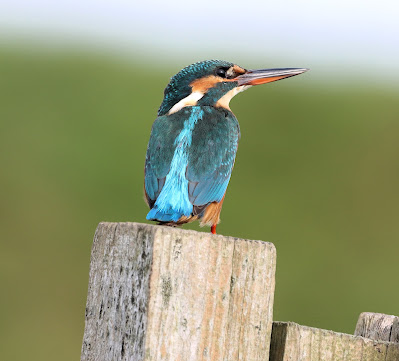A 0730 start is as late as it gets now. Next weekend we turn the clocks back an hour and head into winter. At seven-thirty Thursday it was still pretty dark and we hoped to catch a few early morning Redwings.
We got the nets up in double quick time with the help of headlamps however the Redwings didn’t arrive and we settled for a couple of migrant Blackbirds.
In fact the whole morning’s ringing turned out quiet with just 11 birds caught – 3 Blackbird, 4 Linnet, 3 Chaffinch, 1 Goldfinch.
Chaffinch
Goldfinch
Our four Linnets proved disappointing when the combined count of a number of flocks totalled over 250 finches, a count that included a number of Goldfinches and Greenfinches, the latter not easy to pick out amongst fast flying gangs of small birds.
All four Linnets showed features of Scottish birds and as usual all new birds, with a slim chance only of capturing a recent Linnet or a Linnet from elsewhere.
Goldfinch
Linnet
There was a Sparrowhawk in attendance and then brief views of a “ringtail” Hen Harrier over the nearby marsh.
Female and juvenile Hen Harriers, are known colloquially as “ringtails”, both look very similar, with brown on top, almost checkerboard brown and beige underwings, a white rump and a bearded tail. However, females are larger than males at 400-600g, compared to 300-400g. They're smaller than buzzards, but larger than crows.
Storm Babet made little impression here on the west coast, a few windy days and nights but we are rather accustomed to that scenario and take it in our stride.
Keep an eye on the weather folks. And then come back here to Another Bird Blog for the latest news, views and photographs.
Linking today to Eileen;s Saturday blog.











































.jpg)












